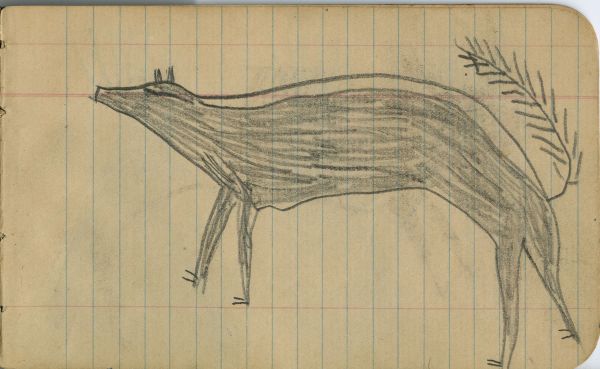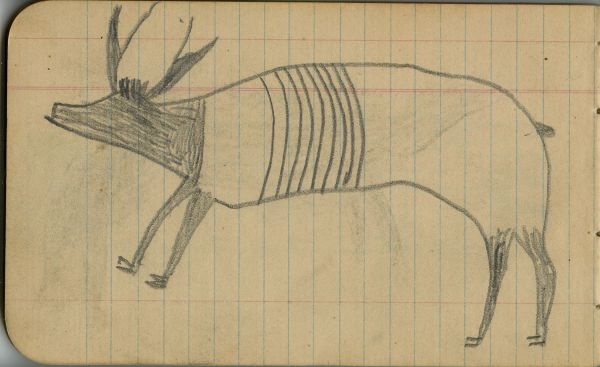ANIMALS: Elk and Skunk
Ethnographic Notes
drawn upside down in ledger. p. 6 ANIMAL: ELK. This is one of 28 elk depicted in the four 1879 Dodge City ledger notebooks (Low and Powers 2012: 14). All of these are on the PILA site: "Northern Cheyenne (KSHS)," "Wild Hog (KSHS)," "Wild Hog (Schoyen)," and this one. The large animal fills the page. It faces right to left. This elk has ribs indicated by parallel lines across its midsection. Tufts of hair are detailed on the head. Other details are split hooves, darker fur on the legs and head, tail, and a small rack of antlers (two by two points). No eyes are visible. Media: Lead pencil outline, details, and fill p. 7 ANIMAL: SKUNK. Skunk in Profile, Tail Raised The single skunk fills the page, facing right to left. Pencil outlines the animals, with details of claws, upraised ears, stripe outline, and branched tail added in pencil. This is one of three drawings that has one or more skunk images in the Dodge City 1879 ledger notebooks, outside of hunting scenes (two more). George Bird Grinnell wrote about the healing power of skunks: "The skunk possesses power. Doctors used its hide to hold their medicine. Men tied its tail to their horses' tails in war. It is engraved in ornament on the seeds employed by women in gambling, and is painted on robes and lodges" (1923, II, 104) and Michael Cowdrey discusses the association of skunks with warfare, because of the black and white coloring: "Both [badgers and skunks] wear 'war paint' that is black and white" (1999: 210). Media: Lead pencil outline, details, and fill



Linea Sundstrom
9/4/12, 3:59 PM
Elk and skunk.